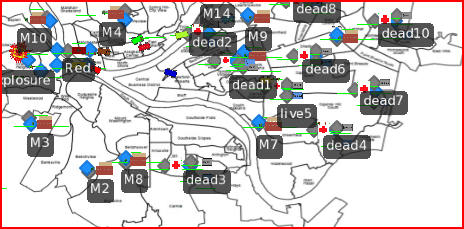
The City of Pittsburgh has an Emergency Medical Service (EMS) system that services 88 neighborhoods. Students at the University of Pittsburgh investigated if the current EMS system is equipped to handle mass casualties.
We use cookies to help you navigate efficiently and perform certain functions. You will find detailed information about all cookies under each consent category below.
The cookies that are categorized as "Necessary" are stored on your browser as they are essential for enabling the basic functionalities of the site. ...
Necessary cookies are required to enable the basic features of this site, such as providing secure log-in or adjusting your consent preferences. These cookies do not store any personally identifiable data.
Functional cookies help perform certain functionalities like sharing the content of the website on social media platforms, collecting feedback, and other third-party features.
Analytical cookies are used to understand how visitors interact with the website. These cookies help provide information on metrics such as the number of visitors, bounce rate, traffic source, etc.
Performance cookies are used to understand and analyze the key performance indexes of the website which helps in delivering a better user experience for the visitors.
Advertisement cookies are used to provide visitors with customized advertisements based on the pages you visited previously and to analyze the effectiveness of the ad campaigns.

INDUSTRY
Healthcare
ORGANIZATION
University of Pittsburgh

The City of Pittsburgh has an Emergency Medical Service (EMS) system that services 88 neighborhoods. Students at the University of Pittsburgh investigated if the current EMS system is equipped to handle mass casualties.
Students at the University of Pittsburgh used Simio to assess the existing EMS process and simulate the effect that mass casualties would have on the EMS system. The mass casualty scenario was based on the Three Rivers Regatta accident in 1988, where a boat lost its course and collided with the shore, injuring 24 spectators. The students considered a location of an event, the locations of dispatch centers and hospitals and distances between each, as well as ample medical equipment, wait times and criteria for the most severe injuries and injuries not as severe.
With the input and scenario the students showed that the current system is sufficient. In the event of an emergency with less than 100 injuries, the current dispatching plan is best. In emergencies of more than 100 injuries, the dispatch plan shown by the simulation reduces time in transit – which can be the difference between life and death.
More Student Projects
January 18, 2024
January 18, 2024
January 18, 2024